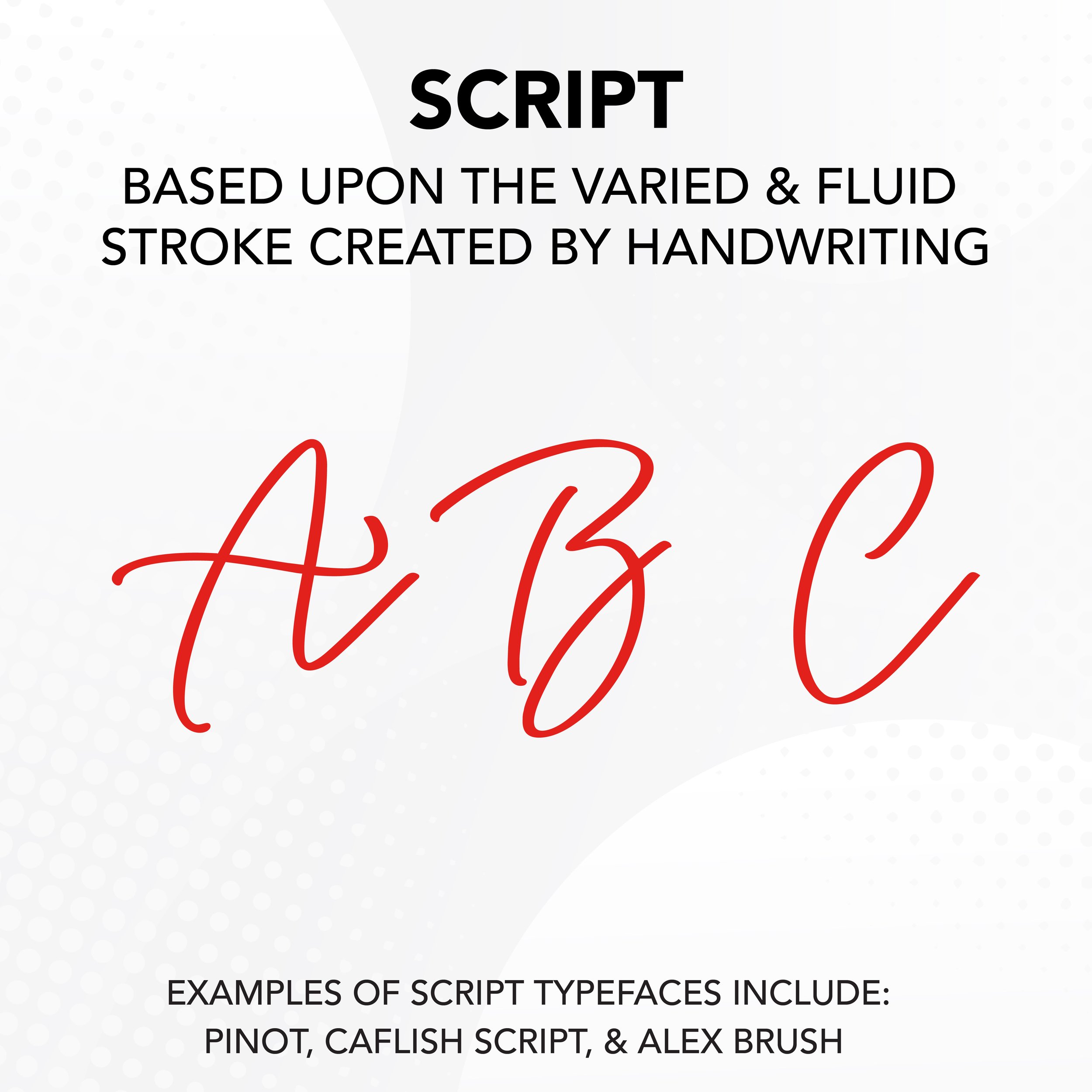Type Classifications - From Serif to Script
If you’re struggling to choose the perfect typeface for your project, don’t worry! The experts at SUN are here to help. In the following article, we'll take a deeper look at type classifications, offering you a comprehensive understanding of the four main categories. From the timeless elegance of serif fonts to the contemporary charm of sans-serif, the graceful flow of script styles, and the captivating allure of decorative designs – each typeface type has a story to tell and a purpose to serve. So, let's dive into the world of type and unlock the art of choosing the right font for every creative endeavor.
Serif Fonts
Serif fonts are characterized by small decorative embellishments called “serifs.” A serif is a small line or stroke attached to the end of a larger stroke in a letter or symbol. Having trouble picturing what a serif looks like? Check out the image to the right for visual reference. Serifs give the characters are more formal appearance and help guide the reader's eye along lines of text. Due to their easy readability, serif fonts are commonly used for long passages of text (such as this paragraph). Some famous examples of serif fonts include Times New Roman, Bodoni, and Baskerville.
Sans-Serif Fonts
In the English language, the preposition “sans” means without or lacking. Therefore, by definition, “sans-serif” fonts lack extending features (serifs) on the end of their characters. The absence of serifs gives these fonts a more modern and clean appearance but also makes them less easy to read. Sans-serif fonts are often used for digital interfaces, headlines, or situations where a more contemporary look is desired. Some popular examples of sans-serif typefaces include Helvetica, Futura, and Gotham.
Script Fonts
Script fonts are a classification of typography that mimics handwriting. Script font characters are composed of varied and fluid strokes that resemble cursive writing or calligraphy. Script fonts can vary widely in style, similar to how actual handwriting is unique for each individual. While some scripts appear more formal, others may convey a more casual or playful vibe. Additionally, some script fonts may be easy to read, while others sacrifice readability for a more artistic appearance. Script fonts are commonly used for greeting cards, invitations, logos and branding, posters, and creative displays. Examples of script fonts include Pinot, Caflish Script, and Alex Brush.
Decorative fonts
Decorative fonts, also known as “display” fonts are highly decorated versions of sans-serif, serif, script, and other font styles. Decorative fonts are designed to be visually striking and attention-grabbing, and they can take on a variety of different styles such as (but not limited to) retro, vintage, futuristic, grunge, ornate, playful, and whimsical. These types of fonts prioritize aesthetics and artistic expression over readability, so they should not be used for long passages of text. Instead, we suggest using them in moderation for elements like headlines, titles, logos, and wordmarks. Some examples of decorative typefaces include Lineat, Whimsy, and Ghost Flames.
In the realm of design, understanding type classifications empowers designers and creators to wield fonts with precision and purpose. By harnessing the expressive potential of typography, you can elevate your designs, evoke emotions, and communicate with visual impact. So, as you embark on your next design endeavor, armed with this newfound knowledge, may your type choices resonate harmoniously with your intentions, breathing life and creativity into your project!




